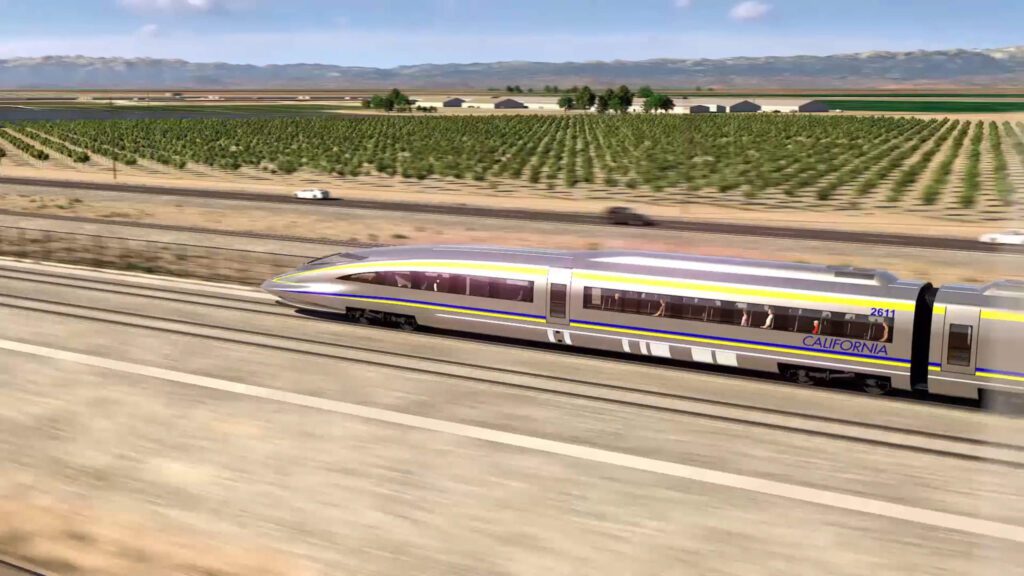Daily News
Putting Jobs First: California High-Speed Rail Crosses 13,000 Construction Jobs Milestone

In a significant milestone for the nation’s first high-speed rail project, the California High-Speed Rail Authority (Authority) announced that it has successfully created over 13,000 construction jobs since 2015. This accomplishment not only signifies progress for the ambitious high-speed rail system but also highlights the positive impact it has had on the local Californian workforce.
Central Valley Takes the Lead:
With over 70 percent of these jobs going to residents of California’s Central Valley, the project has played a vital role in providing employment opportunities for individuals in the region. It is worth acknowledging the efforts of nearly 1,400 workers dispatched each day to various high-speed rail construction sites. These jobs have injected economic vitality and growth into communities across the Central Valley.
Regional Breakdown:
- Fresno County: 4,222 jobs
- Kern County: 2,538 jobs
- Tulare County: 1,282 jobs
- Madera County: 580 jobs
- Kings County: 462 jobs
- Merced County: 189 jobs
- Remaining California Counties: 3,387 jobs
- Out-of-State: 369 jobs
A Decade of Strong Partnerships:
The Authority has had a longstanding partnership with the California State Building Trades, which has facilitated the creation of thousands of good-paying union jobs. Notably, during the past five years alone, over 10,000 construction positions have been generated through these collaborative efforts. Moreover, a significant focus has been placed on directing employment opportunities towards individuals from disadvantaged communities, further promoting inclusivity and economic upliftment.
California Jobs First Council:
To bolster job creation even further and ensure economic prosperity for all Californians, the California Jobs First Council was established. This council aims to align economic resources, expedite job creation, and enhance opportunities throughout the state. With particular focus on the Central San Joaquin Valley, this initiative serves as an impetus for creating more jobs, rapidly, in every community.
Future Expansion and Construction Progress:
Looking ahead, the Authority is resolute in extending the current 119-mile high-speed rail network to span 171 miles, reaching from Merced to Bakersfield. The construction has already commenced on this expansion project. Presently, more than 25 dynamic construction sites are active within the Central Valley. As a testament to its commitment to environmental stewardship, the Authority has obtained full environmental clearance for 422 miles of the high-speed rail program, stretching from the Bay Area to Los Angeles County.
Stay Updated:
For the latest developments and information about the high-speed rail construction, interested individuals are encouraged to visit the official website: www.buildhsr.com. On the website, visitors can access recent videos, animations, photographs, press center resources, and the latest renderings of the project. All files are available for free use, courtesy of the California High-Speed Rail Authority.
The California High-Speed Rail Authority’s achievement of surpassing 13,000 construction jobs is undoubtedly a cause for celebration. By focusing on job creation and prioritizing the local workforce, this landmark project is making a positive difference in the lives of Californians, particularly those in the Central Valley. With continued progress and future expansions, the California High-Speed Rail project not only brings efficient transportation but also provides a substantial economic boost that benefits communities and individuals alike.
Source: California High-Speed Rail Authority
What is California High-Speed Rail?
The California High-Speed Rail (CAHSR) is a state-funded project led by the California High-Speed Rail Authority. Currently under construction, Phase 1 is planned to cover 494 miles from San Francisco to Los Angeles, passing through the Central Valley. There are plans for Phase 2, which would extend the system to Sacramento and San Diego, totaling 776 miles. Authorized by a 2008 ballot, this ambitious project aims to connect major urban areas, significantly reducing travel times. The goal for Phase 1 is to achieve a travel time of 2 hours and 40 minutes between San Francisco and Los Angeles, a vast improvement from the existing Amtrak service, which takes around nine hours.
Construction of Phase 1 began in the Central Valley back in 2015. The project is being built in sections due to limited funding. The state aims to complete a 171-mile (275 km) long Initial Operating Segment (IOS) connecting Merced and Bakersfield by 2024. The IOS is expected to begin its revenue service as a self-contained high-speed rail system between 2030-2033, at an estimated cost of $28–35 billion. CAHSR trains running along this section would be the fastest in the Americas, with a top speed of 220 mph (350 km/h).
Between January 2015 and December 2023, a whopping amount of $11.2 billion was spent on the IOS project, which includes 119 miles (192 km) currently under construction, alongside upgrades to the existing rail lines in the San Francisco Bay Area and Greater Los Angeles. The plan is that Phase 1 will share tracks with conventional passenger trains. However, the Authority has not yet secured funding to connect the Central Valley section with either the Bay Area or Los Angeles, which involves crossing several major mountain passes. As of 2024, it is estimated that Phase 1 will cost a total of $106.2 billion.n.
Supporters of the California High-Speed Rail project emphasize the potential benefits it offers, including the reduction of air traffic and highway congestion, decreased pollution and greenhouse gas emissions, and the promotion of economic growth by connecting inland regions to coastal cities. However, opponents argue that the project is too expensive and advocate for directing funds to other transportation or infrastructure initiatives. The choice of route and the decision to initiate construction in the Central Valley, rather than more densely populated areas, have been points of contention. The project has encountered notable challenges such as delays and cost overruns due to management issues, legal disputes, and a lack of complete funding commitment.